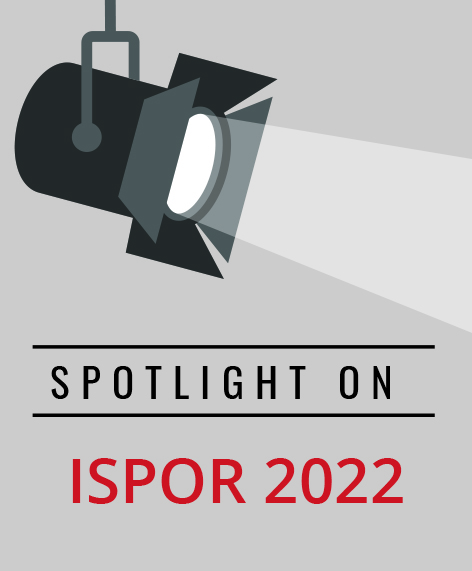Poster Session Recap: Rare and Orphan Diseases
Chintal H. Shah, MS, BPharm, University of Maryland Baltimore, Baltimore, MD, USA
A vast variety of posters relating to rare and orphan diseases were presented in this session that varied from cost and utilization studies to research that explored the potential to mine data from social media to gain insights that may not be obtained through traditional methods.
Comparison of Healthcare Resource Utilization and Costs in Patients With and Without Bullous Pemphigoid: A Retrospective Analysis of US Health Insurance Claims Data
Presenter: Xiao Xu, AstraZeneca, Gaithersburg, MD, USA
Summary: This retrospective, matched cohort analysis quantified the impact of bullous pemphigoid (BP) on healthcare resource utilization and corresponding costs using 2015–2019 US administrative health insurance claims data (MarketScan). The key finding of this research was that the BP cohort (versus non-BP cohort) had higher annualized healthcare resource utilization and associated costs both at baseline (Δ$15,480) and follow-up (Δ$22,332). The largest contributor to cost for BP patients in the follow-up period was hospitalization (42%).
Cost-Effectiveness of Alternative Diagnostic Testing Pathways With Whole Exome Sequencing in a Rare Disease Patient Population: The Canadian Care-for-Rare SOLVE Multicentre Observational Cohort
Presenter: Koen Degeling, Lumen Value & Access, The Netherlands
Summary: This study examined and quantified the time to diagnosis, associated testing costs, and cost-effectiveness of whole exome sequencing (WES) testing at alternative places (no WES, and WES as the 1st, 2nd, 3rd, or 4th test [tiers]) in the diagnostic pathway among patients with a rare disease of suspected genetic etiology using a discrete event simulation model (Figure 1). Model parameters were populated using data from the electronic medical records for 169 patients from the C4R-SOLVE cohort. Achieving a diagnostic result was the primary effectiveness measure. WES was found to decrease the time to diagnosis for tiers 1 & 2, and increase the time to diagnosis for tiers 3 & 4. The key findings of this research were that introduction of WES in the diagnostic pathway can increase the diagnostic yield and reduce the time to diagnosis with the benefits being greater the earlier in the pathway. The expected cost per diagnosis was expected to decrease substantially regardless of the place of WES in the diagnostic process.
Figure 1: Whole exome sequencing discrete event simulation model
Economic Burden of Transfusion-Dependent Beta-Thalassemia in the United States
Presenter: Chukwukadibia Udeze, Vertex Pharmaceuticals Inc, Sommerville, MA, USA
Summary: This retrospective, matched cohort study used administrative claims data (US MarketScan Commercial, Medicare, and Medicaid Multistate databases) to quantify the economic burden of transfusion-dependent beta-thalassemia (TDT) in the United States. This study found that the majority of patients with TDT were enrolled in Medicare (>80%) and that the mean total annual healthcare costs were 2020 $137,987 per person per year, with red blood cell transfusions contributing $27,887 per person per year, and iron chelation therapy contributing $70,402 per person per year. Outpatient care and outpatient prescriptions were the major drivers for these high costs.
Leveraging Social Media for Patient Experience Insights in Rare Disease
Presenter: Rachel Black, AESARA, Chapel Hill, NC, USA
Summary: The goal of this study was to determine the feasibility of utilizing social media to generate insights on patient experience around treatment, quality of life, and burden of illness for rare diseases using data from the cystic fibrosis subreddit /r/CysticFibrosis on Reddit.com from July to December 2021. Posts on Reddit.com were reviewed, tagged, and manually labeled to determine if they contained discussion points of potential relevance to clinicians or manufacturers (Figure 2). Information on the category (Patient Journey, Treatment Effect, Treatment Switching, and Life Milestones), as well as subcategories treatment effect, reason for switching, and relevant milestones was captured. The findings of this prototype highlighted that social media could be a potential source of real-time information that can provide treatment level insights into the patient journey and experience that may be difficult to otherwise capture using traditional methods of research.
Figure 2: Posts were categorized into 1 of 4 overarching topics, then subcategorized based on content.

Real-World Usage Patterns and Costs of IVIG Treatment in Adults With Generalized Myasthenia Gravis in the United States
Presenter: Cynthia Qi, Argenx, Inc, Boston, MA, USA
Summary: This study assessed immunoglobulin (IVIg) usage patterns and its implications on costs over 1-year post-initiation in adults with generalized myasthenia gravis (gMG) in the United States using 2014-2020 data from Symphony Health’s Integrated Dataverse® (IDV). The results indicated that chronic IVIg users comprised of 43.0% of IVIg initiators, and that the mean annual medical costs per patient for chronic use were 2.2- to 2.9-fold greater than the costs for intermittent use.
The Burden of Systemic Glucocorticoid Use in Antineutrophilic Cytoplasmic Autoantibody-Associated Vasculitis Patients
Presenter: Irene von Hennigs, ChemoCentryx, San Jose, CA, USA
Summary: This retrospective analysis quantified the glucocorticoid use in newly diagnosed patients with granulomatosis with polyangiitis (GPA) and microscopic polyangiitis (MPA) using 2016-2019 Milliman proprietary commercial claims data and Medicare 100% FFS Innovator Research data. This research found that a vast majority of newly diagnosed individuals with GPA and MPA were treated with high cumulative amounts of glucocorticoids, and the authors recommend that there is a need for glucocorticoid-sparing therapies in these populations given the side effects reported with high doses of glucocorticoids.


